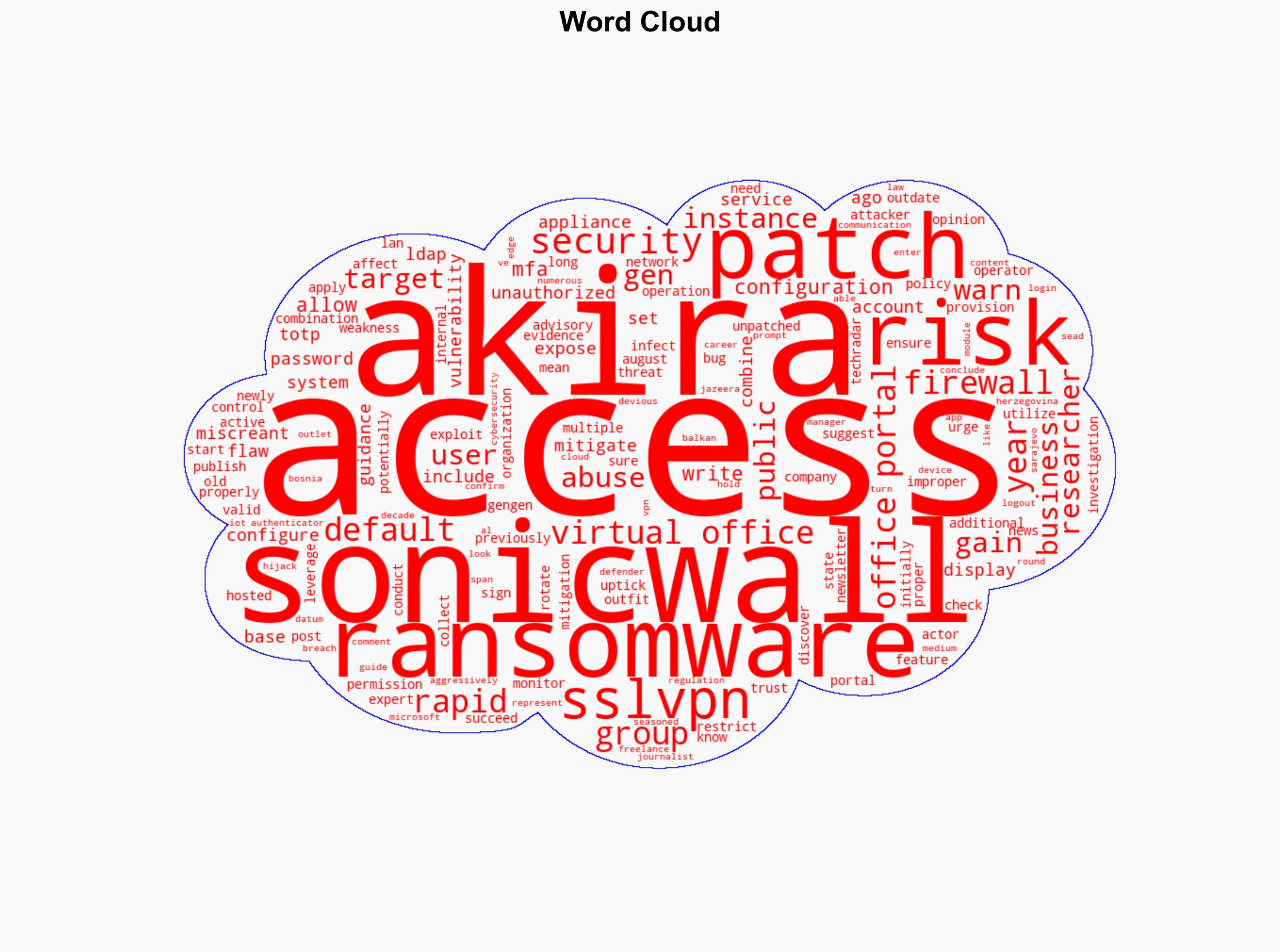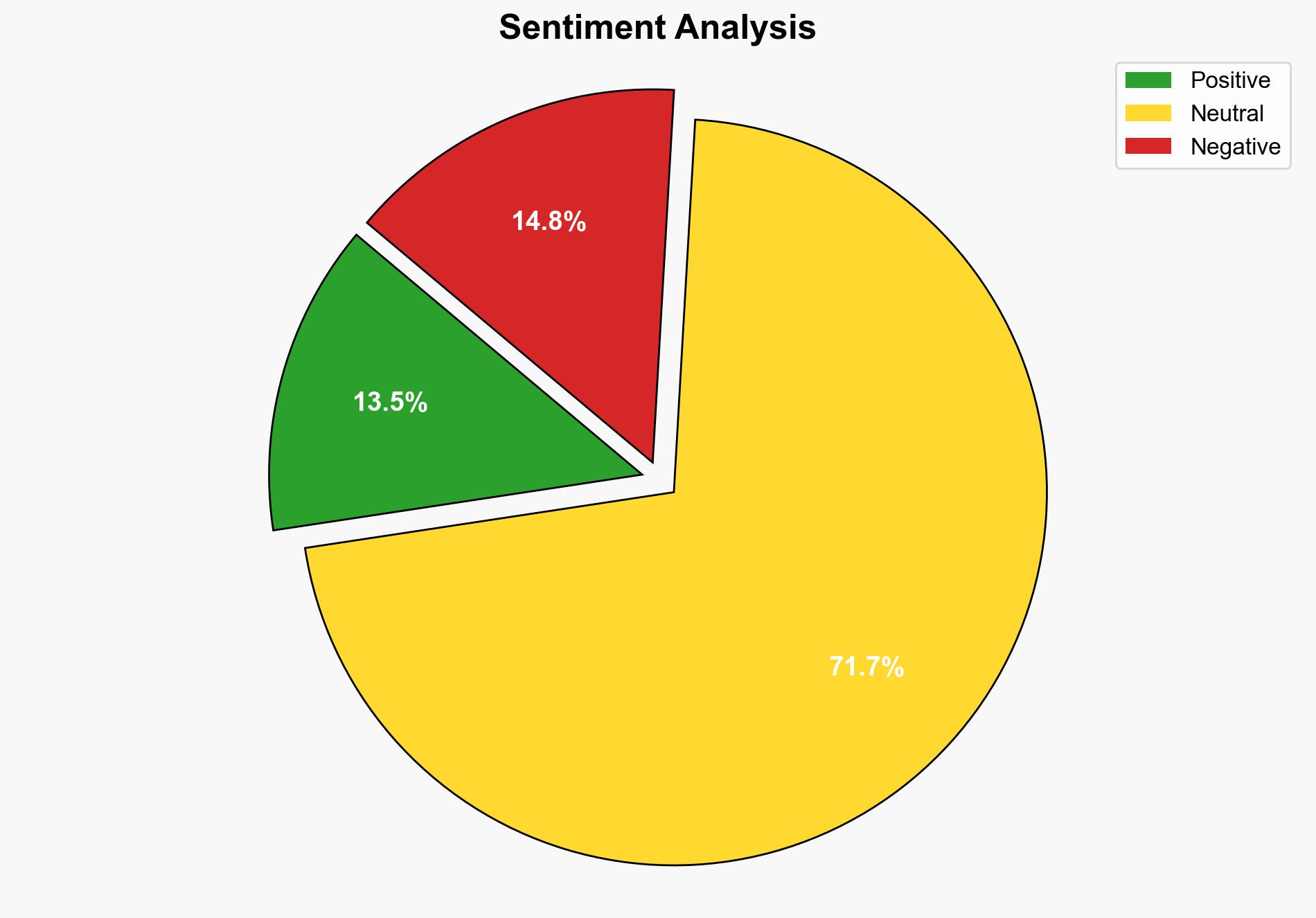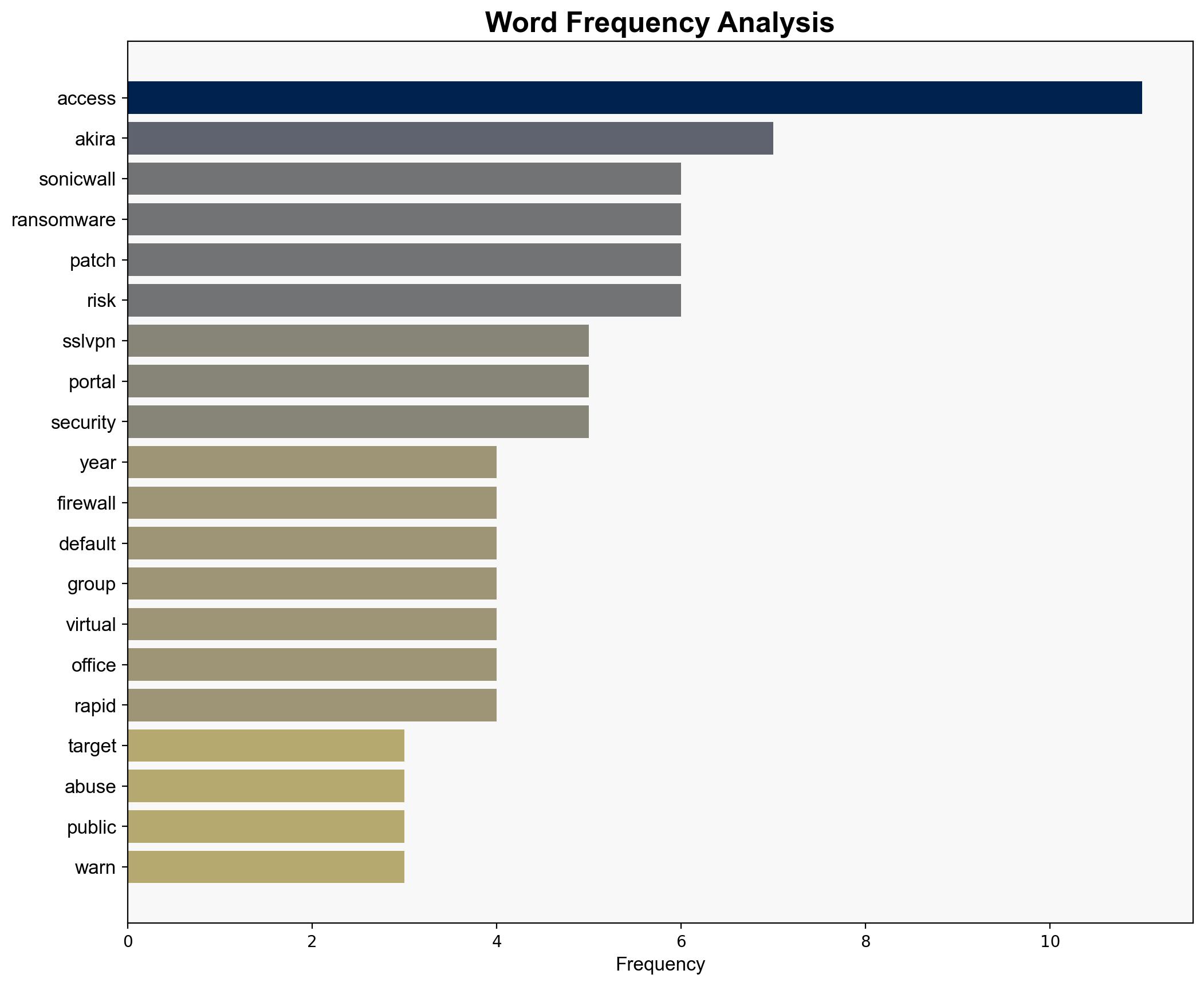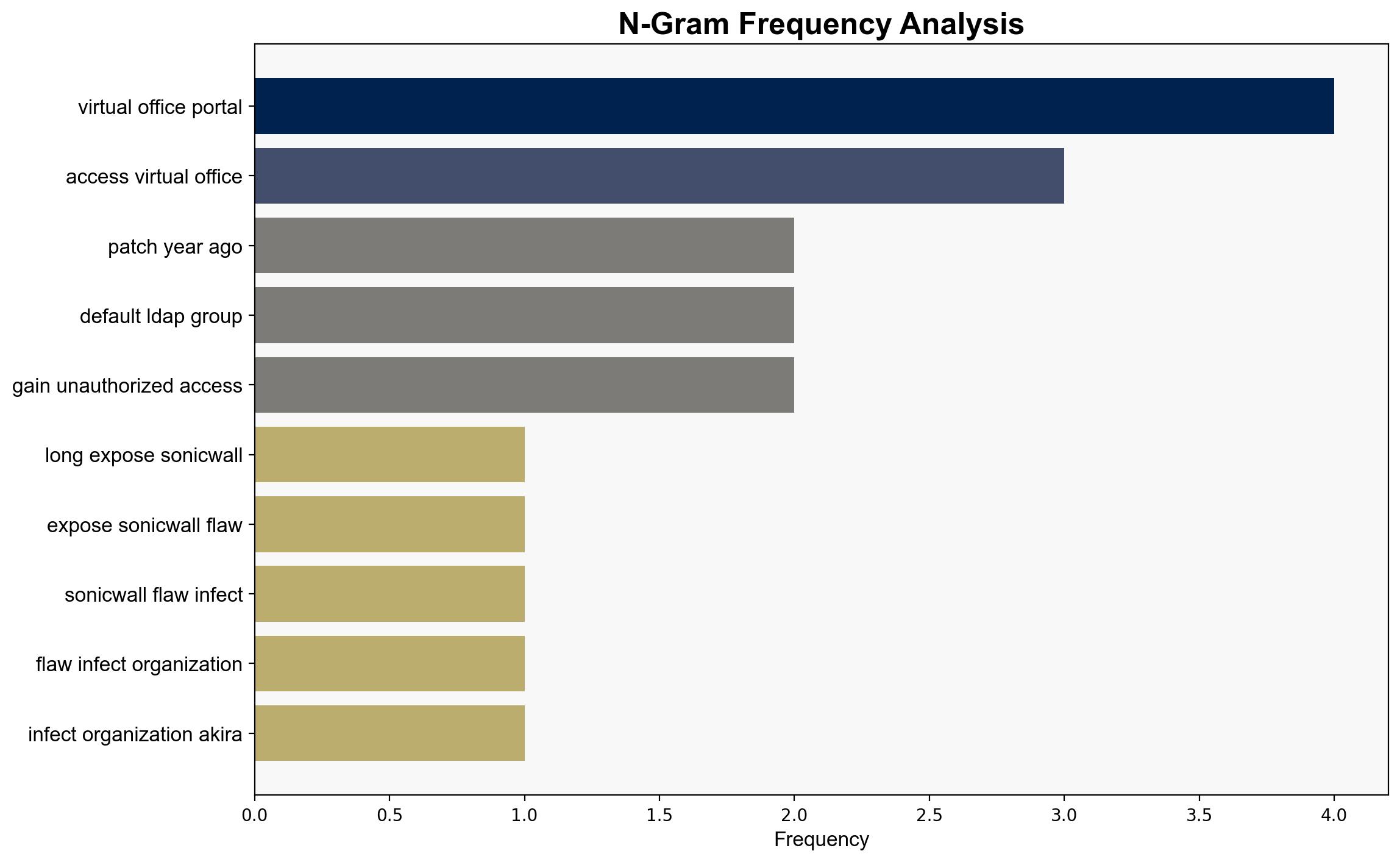This long-exposed SonicWall flaw is being used to infect organizations with Akira ransomware – so patch now – TechRadar
Published on: 2025-09-11
Intelligence Report: This long-exposed SonicWall flaw is being used to infect organizations with Akira ransomware – so patch now – TechRadar
1. BLUF (Bottom Line Up Front)
The Akira ransomware group is exploiting a long-known vulnerability in SonicWall SSLVPN devices to gain unauthorized access to organizational networks. The most supported hypothesis is that the Akira group is systematically targeting organizations with unpatched SonicWall devices to maximize their ransomware deployment. Confidence level: High. Immediate patching of affected systems and strengthening of access controls are recommended to mitigate this threat.
2. Competing Hypotheses
Hypothesis 1: The Akira ransomware group is deliberately targeting organizations with unpatched SonicWall devices as part of a coordinated campaign to exploit known vulnerabilities for financial gain.
Hypothesis 2: The exploitation of the SonicWall vulnerability by the Akira group is opportunistic, with the group taking advantage of any unpatched systems they encounter rather than specifically targeting SonicWall devices.
Using the Analysis of Competing Hypotheses (ACH) 2.0, Hypothesis 1 is better supported due to the systematic nature of the attacks and the specific mention of SonicWall devices in the intelligence. The consistent pattern of targeting suggests a deliberate strategy rather than random opportunism.
3. Key Assumptions and Red Flags
Assumptions include the belief that organizations have not patched their systems due to oversight rather than resource constraints or strategic decisions. A red flag is the lack of detailed information on how many organizations have been affected and the specific industries targeted. Potential cognitive bias includes confirmation bias, assuming the Akira group is solely responsible for all related attacks.
4. Implications and Strategic Risks
The continued exploitation of this vulnerability could lead to significant financial losses for affected organizations and damage to their reputations. There is a risk of cascading effects if critical infrastructure is compromised. Geopolitically, this could strain relations between countries if state-sponsored actors are suspected of involvement. Economically, widespread attacks could disrupt markets and supply chains.
5. Recommendations and Outlook
- Organizations should immediately patch all affected SonicWall devices and review their access control policies.
- Implement multi-factor authentication (MFA) and regularly rotate passwords to enhance security.
- Monitor network traffic for signs of unauthorized access and conduct regular security audits.
- Scenario Projections:
- Best Case: Rapid patching and improved security measures lead to a decline in successful ransomware attacks.
- Worst Case: Failure to patch results in widespread ransomware infections, causing significant economic and operational disruptions.
- Most Likely: A moderate number of organizations patch their systems, reducing but not eliminating the threat.
6. Key Individuals and Entities
Sead, a seasoned journalist based in Sarajevo, Bosnia and Herzegovina, reported on the issue. The Akira ransomware group is the primary entity involved in exploiting the SonicWall vulnerability.
7. Thematic Tags
national security threats, cybersecurity, counter-terrorism, regional focus




